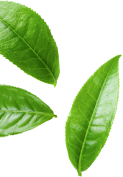



COPD is a group of conditions that lead to chronic inflammation and blockage of the airways in the lungs, making it difficult to breathe in and out.
The two most common types of COPD are chronic bronchitis and emphysema. Chronic bronchitis is chronic inflammation of the bronchial tubes, which causes increased mucus production and coughing. Emphysema results in damage and loss of lung tissue, causing the lungs to lose their elasticity and normal function.
The most common causes of COPD are long-term smoking, environmental pollution, exposure to chemical irritants and genetic predisposition. Symptoms of the disease include shortness of breath, coughing, excessive saliva production, chest pain and lack of energy.
COPD cannot be cured, but it can be treated. The treatment plan usually focuses on relieving symptoms, improving breathing and slowing the progression of the disease. Treatment may include medication, respiratory therapy, oxygen therapy and lifestyle changes such as smoking cessation and a healthy diet.
Dyspnoea: Dyspnoea is one of the most common symptoms of this condition. At first it may be difficult to breathe, especially during physical activity, but as the disease progresses, shortness of breath may occur even at rest.
Coughing: Chronic cough is also a common symptom in people with COPD. Coughing can be dry or productive, i.e. it can be accompanied by the production of phlegm.
Excessive drool production: many people with COPD produce excessive amounts of drool in their lungs, which they try to clear by coughing. This is caused by blocked airways.
Chest pain or discomfort: COPD can cause chest pain or discomfort in the respiratory system, especially due to damage to the bronchial tubes and lung tissue.
Weight loss and muscle weakness: as the disease progresses, shortness of breath and difficulty breathing can lead to a loss of appetite, which can lead to weight loss. In addition, lack of oxygen can cause muscle weakness.
Recurrent respiratory tract infections: due to a weakened respiratory system, COPD patients may be more prone to respiratory tract infections such as pneumonia and bronchitis.
Fatigue and low energy levels: shortness of breath and chronic oxygen deprivation can often leave patients feeling tired and with low energy levels.
Inhalation therapy offers a more effective treatment with fewer side effects compared to oral medication.
Faster effect: inhaled medicines can reach the lungs and airways more quickly, leading to faster relief of COPD symptoms such as breathlessness and cough.
Reduced side effects: inhalation therapy can reduce the risk of side effects from medications because the active ingredients are delivered directly to the target area, the lungs, and less of the medication is released into the bloodstream, reducing the likelihood of systemic side effects.
Use of small doses: inhaled medicines can be used in small doses, which can be effective while minimising unnecessary drug intake and possible overexposure.
Specific treatment options: inhaled therapy allows the doctor to tailor the treatment depending on the severity of the disease and the individual needs of the patient. Inhaled medications can be anti-inflammatories, bronchodilators or combination products, all of which can help relieve COPD symptoms in different ways.
Easier to adhere to: inhaled therapy is easy to administer and adhere to as there is no need for injections or oral tablets. This can increase patients’ compliance with treatment, which can improve their long-term condition.
Stopping smoking: if you have COPD and smoke, the most important step is to stop smoking immediately. Tobacco smoke irritates the lungs and makes COPD symptoms worse. Stopping smoking will help slow the progression of the disease and improve quality of life.
Avoid environmental irritants: Try to minimise or avoid air pollution and exposure to environmental irritants such as airborne dust, chemicals and strong odours. Use an air filter in your home and try to keep the air as clean as possible.
Controls infections: upper respiratory infections, such as flu and colds, can worsen COPD symptoms. Get flu and pneumococcal vaccinations, and make sure you wash your hands thoroughly and prevent infections.
Proper nutrition: a healthy diet can help boost the immune system and improve energy levels. Eat plenty of fruits, vegetables, whole grains and lean proteins. Try to avoid foods that trigger bloating or acid reflux.
Weight control: being a higher-weight person can put strain on the lungs and increase breathlessness. Maintaining a healthy weight or losing excess weight can improve the condition of COPD patients.
Regular exercise: proper exercise can help strengthen muscles and increase lung capacity. Get advice from your doctor about what type and amount of exercise is right for your condition. Respiratory therapy can also help to increase the effectiveness of exercise.
Oxygen therapy: oxygen therapy may be necessary, especially for those with low oxygen levels. Oxygen therapy may help maintain oxygen levels in the right range by controlling oxygen levels.
Respiratory techniques and rehabilitation: you may also have access to respiratory therapy and pulmonary rehabilitation, which can help improve your breathing and physical fitness.

In the case of COPD, a balm can help relieve these symptoms in some ways, although it is important to understand that a balm alone will not cure COPD and is not a substitute for specialist treatment or medication.
Breathing relief: inhaling certain balms (such as those based on eucalyptus or menthol) can help to dilate the airways and relax the throat, which can relieve breathing difficulties. These balms may also have a cooling effect to freshen the airways and help ease breathing.
Cough relief: certain ingredients in balms may be able to relieve coughing and throat irritation. Some ingredients in these balms can help reduce the frequency and intensity of coughing.
The use of PulmoFresh herbal balm is recommended in case of colds, coughs and cold complaints!
Instructions for use
For massage, rubbing
Recommended to use 3-5 times a day, using a finger-sized amount. The balm should be applied to the chest and back area, then thoroughly massaged and rubbed in. It is more effective before going to bed, as the essential oils released by the balm, when inhaled, promote a restful sleep
For inhalation
Add 1 teaspoon of PulmoFresh balm to half a litre of hot water and mix well. This will create a vapour which should be inhaled for about 20 minutes.

HillVital balms are your reliable support for an active life, crafted from natural ingredients!